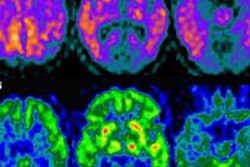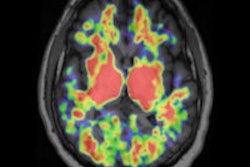The trajectory of amyloid plaque buildup, as seen in Pittsburgh Compound B (PiB) PET scans, may be a more powerful biomarker for cognitive decline than the total amount of plaque, according to a study published online July 15 in Neurobiology of Aging.
Senior author Christos Davatzikos, PhD, and colleagues from the University of Pennsylvania, in collaboration with researchers from the U.S. National Institute on Aging (NIA), identified a stronger association between memory decline and spatial patterns of amyloid plaque progression than the total plaque burden.
Past studies have indicated that people without dementia who have more plaque are at greater risk of developing the disorder. However, more recently it's been shown that nearly one-third of people with plaque never showed signs of cognitive decline, raising questions about its specific role in Alzheimer's disease.
The team retrospectively analyzed the PiB-PET scans of 64 patients (average age, 76 years) from the NIA's Baltimore Longitudinal Study of Aging. The researchers evaluated PET images that showed the density and volume of amyloid plaque and its spatial distribution within the brain. The subjects' cognitive decline was also assessed over a 12-year period, and they were divided into two groups: those who were most stable and those who were most declining.
While there was no significant difference in the total amount of amyloid, the PiB-PET images showed differences in the spatial patterns. The stable patients showed early accumulation in the frontal lobes, while the declining patients showed accumulation in the temporal lobes.
So, the researchers concluded, cognitive decline appears to be more about the spatial pattern of plaque progression, rather than the total amount found in the brain.
The findings are important because they potentially answer questions about the variability in clinical research among patients presenting with plaque. Plaque accumulates in different spatial patterns for different patients, and it is that pattern of growth that may determine whether memory declines.
The results also have broad implications for understanding the relationship between cognitive decline and resistance and amyloid plaque location, as well as the use of amyloid imaging as a biomarker, they added.



















